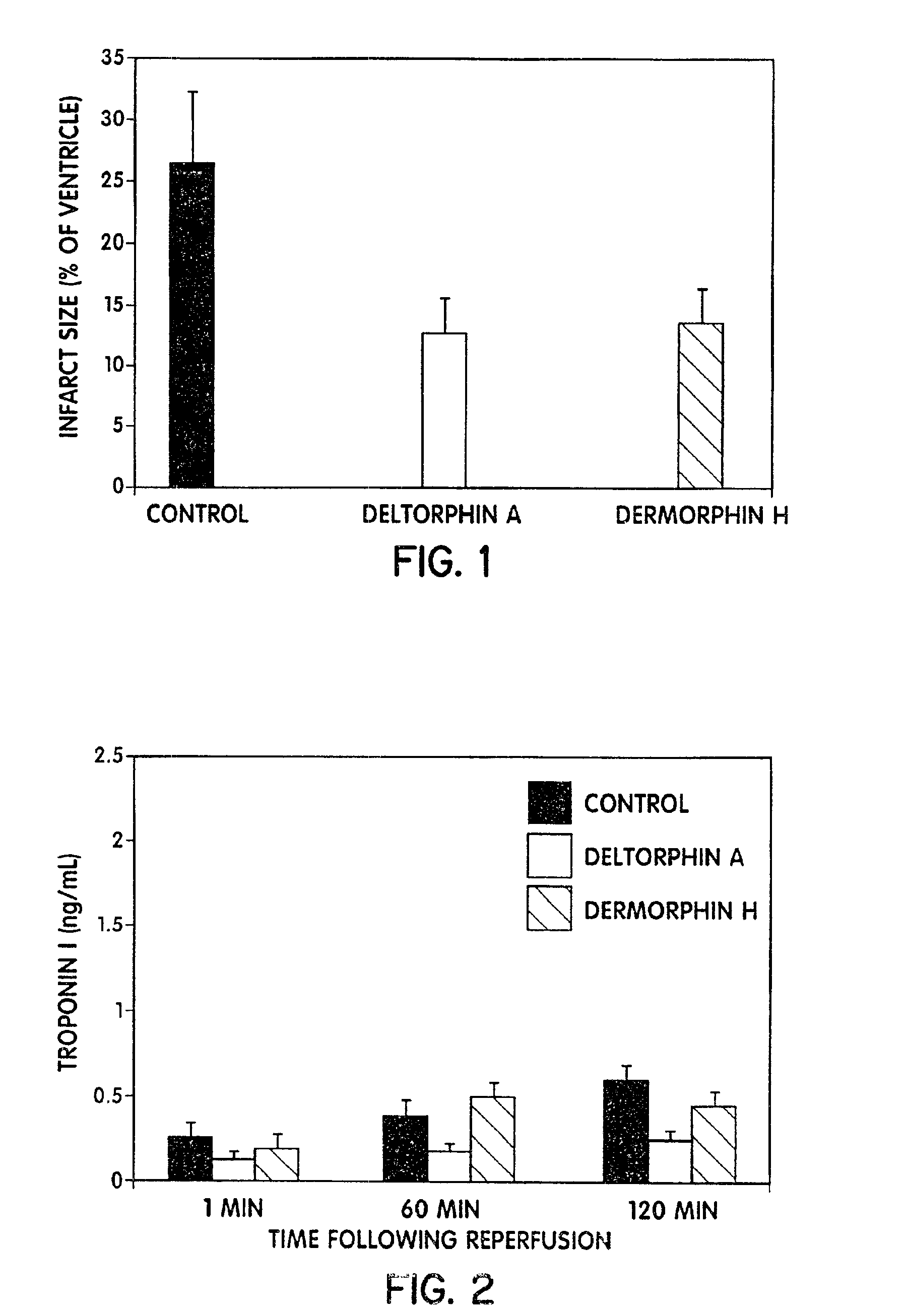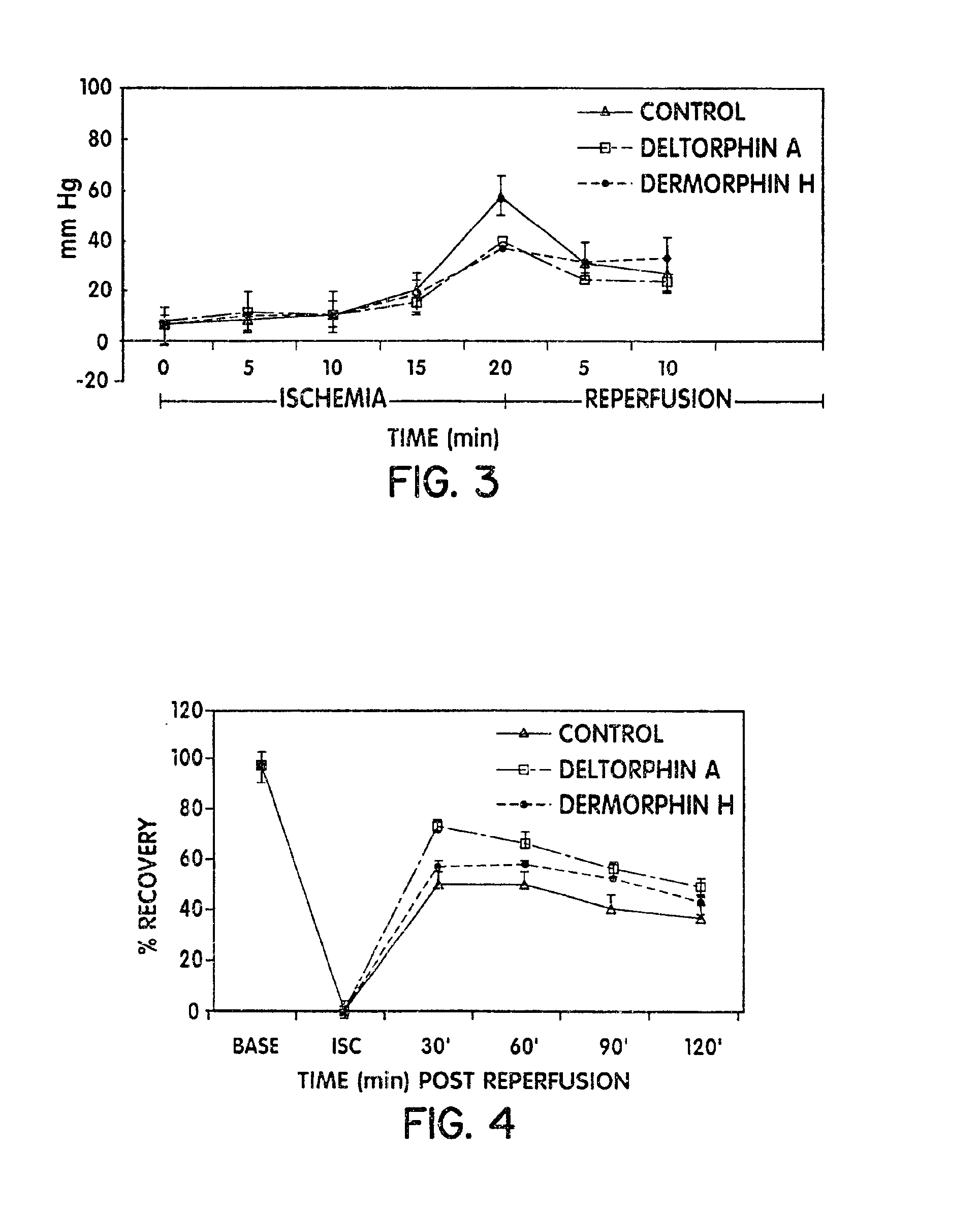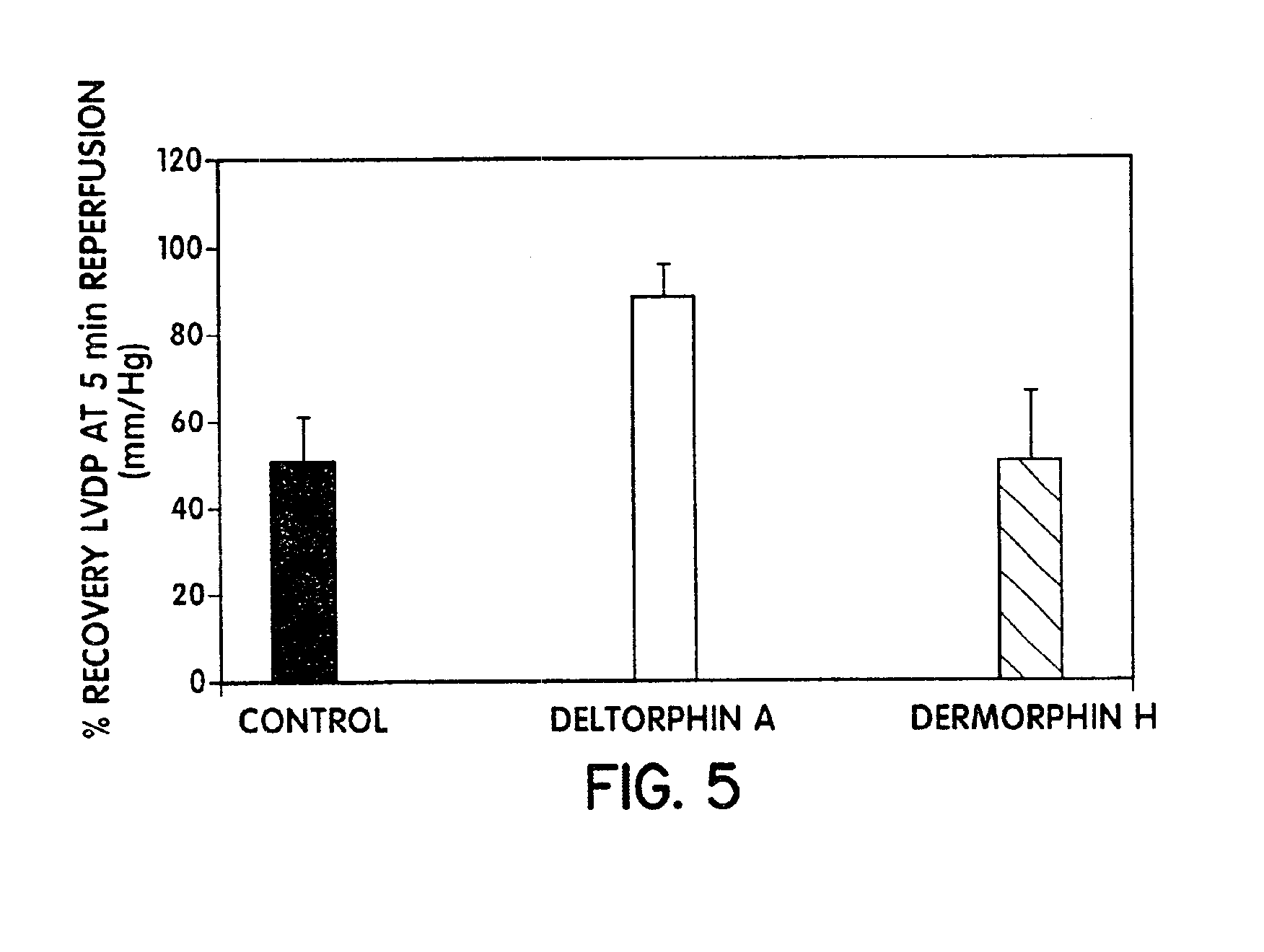Protection against ischemia and reperfusion injury
a technology of ischemia and reperfusion injury, applied in the direction of antinoxious agents, peptide/protein ingredients, peptide sources, etc., can solve the problems of slow reversal of ischemic membrane damage, poor postoperative ventricular function remains significant, and myocardial energetics are altered (stunning), so as to reduce tissue necrosis, preserve organ function, and reduce the effect of injury
- Summary
- Abstract
- Description
- Claims
- Application Information
AI Technical Summary
Benefits of technology
Problems solved by technology
Method used
Image
Examples
Embodiment Construction
[0019]The invention is directed to compounds that have a salutary effect on cardiac function following ischemia, and methods of using the compounds. The compounds may be administered directly to an individual, and are particularly effective when administered 24 h prior to the onset of ischemia. This may occur, for example, prior to scheduled cardiac surgery. The compounds may also be included in a preservative solution for an isolated organ, such as a heart or liver being maintained viable for transplant.
[0020]One of the compounds is a heptapeptide having the sequence Tyr-D-Met-Phe-His-Leu-Met-Asp-NH2 SEQ ID NO:1, hereinafter referred to as deltorphin A. Another of the compounds is a thirteen amino acid sequence Tyr-D-Ala-Phe-Gly-Tyr-Pro-Ser-Gly-Glu-Ala-Lys-Lys-Ile SEQ ID NO:2. The peptides may be produced by a number of methods, such as using an automated peptide synthesizer, through recombinant molecular techniques, or isolated from a naturally occurring source, as is known to one...
PUM
| Property | Measurement | Unit |
|---|---|---|
| molecular weight | aaaaa | aaaaa |
| molecular weight | aaaaa | aaaaa |
| pressure | aaaaa | aaaaa |
Abstract
Description
Claims
Application Information
 Login to View More
Login to View More - R&D
- Intellectual Property
- Life Sciences
- Materials
- Tech Scout
- Unparalleled Data Quality
- Higher Quality Content
- 60% Fewer Hallucinations
Browse by: Latest US Patents, China's latest patents, Technical Efficacy Thesaurus, Application Domain, Technology Topic, Popular Technical Reports.
© 2025 PatSnap. All rights reserved.Legal|Privacy policy|Modern Slavery Act Transparency Statement|Sitemap|About US| Contact US: help@patsnap.com



